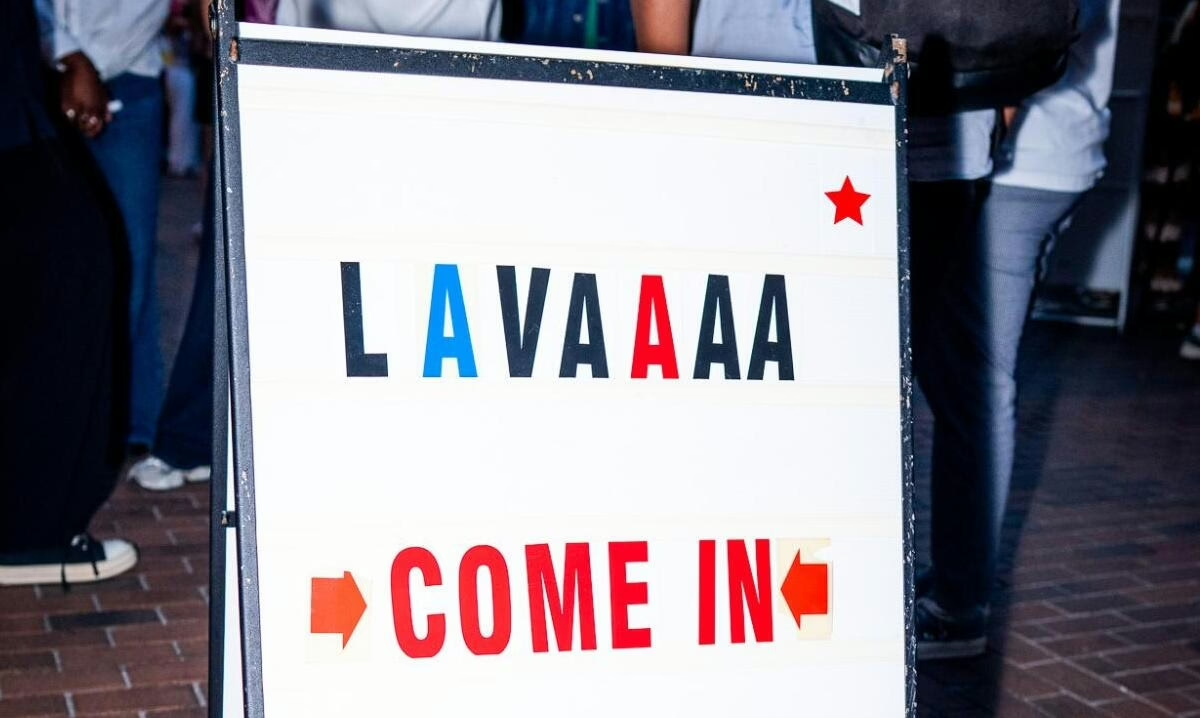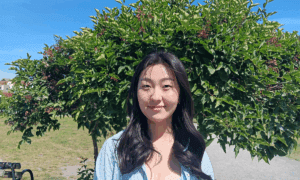Seattle has long been known as a home and birthplace for creative expression. But as society has progressed, finding spaces for that expression has become increasingly difficult. Modern society has not only pushed out “third spaces”—social environments separate from home and work—but also made the need for them expeditiously.
“There’s not a lot of spaces where you can go to as a queer person of color and feel comfortable,” says Diego, a vendor at Lava Market’s anniversary event on Oct. 24.
Lava Market is a fashion-focused event with a mission to create opportunities for small Seattle creatives to share their art and enjoy each other’s company. Lakayla—Lava’s founder—makes her focus on highlighting people of color and queer voices clear. With each vendor representing their community, the drive and energy in the room were palpable.
As Seattle’s cost of living rises and more cultural institutions close or commercialize, artists and students are finding themselves without places to gather, collaborate, or simply exist outside of work and school. In that environment, events like Lava Market are becoming crucial.
On Oct. 24, Lava Market held its anniversary event. Vendors, designers, artists, and creatives gathered to celebrate their craft and community. The market featured jewelers, print artists, small clothing brands, flash tattoos, tooth gems, as well as wine and music. But beyond the vendors’ tables and buzzing speakers, you hear genuine laughter and conversations, there was genuine laughter and conversation—interactions between people longing for connection. Guests might have come to shop, but they stayed to share ideas, make friends, and enjoy the experience.
This topic reflects a growing conversation among Seattle’s youth about the relevance of third spaces—public or semi-public environments that exist outside home and work. These spaces have taken many forms throughout history, but as commercial rents rise and social life becomes increasingly digital, they have become harder to maintain.
For college students and young people, especially those from marginalized communities, the lack of accessible spaces can be isolating. Many young creatives say that as much as they would love to expand and pursue passions, traditional venues come with financial or social barriers—gallery fees, exclusivity, or cultural norms that make them feel unwelcome. Events like Lava Market counter that by being intentionally inclusive and community-driven.
Lakayla said she started Lava to fill that gap. “I wanted a space to gather people like me but not like me,” she said. “A place where people could show up as themselves, share their work, and meet people with different crafts that love expression as much as they do, as much as I do.”
That mission has resonated with Seattle’s youth. Guests at the event described Lava Market as a place where “people’s creativity stood out,” and where “they could express themselves freely.”
“Accessible designer fashion is my mission,” Diego said. “I originally started Santiago’s Vintage as a way to showcase my archive and collection. For me, it was a way to get access into luxury, especially through second-hand, and also getting to experience that while not having to come from a background of having that prior wealth or knowledge. For me, it was a way to take back and bring to my community.”
However, Lava’s success raises questions about sustainability. Community-based markets often rely on donations, volunteer labor, and small business partnerships to stay afloat. While that keeps these places authentic, it also makes them vulnerable to rising costs and limited funding.
Still, Lava Market continues to grow, expanding its reach with each event. The consistency and enthusiasm of attendees show a clear desire for third spaces—spaces that value people over profit and collaboration over competition. Historically, grassroots events like these have been a key part in rebuilding and strengthening communities, especially after the pandemic’s impact on our social skills. Third spaces do not have to be strictly creative outlets; they can also foster mutual support, networking, and emotional care.
As a young creative, I have noticed a social shift. As the pressure of society grows, the need for creative expression grows with it. Many young people have taken it upon themselves to create environments where their drive and passion can thrive. It is a common historical pattern—when all else fails, the arts persist.
As Seattle faces affordability challenges alongside housing, drug, and population crises, fighting for equity and belonging can feel like screaming at a brick wall. The question becomes: How do we create and preserve environments like these for the next generation?
For the Lava community—and others like it all over the city—third spaces offer a glimpse of what an empathetic future can look like: one where art, identity, and community coexist freely.
Satrn
Hello! My name is Satrn, and I am a writer here at the Collegian. My main focus for my studies is literature and American history, but I have a lot I am interested in pursuing academically. There isn't too much to say about me without boring you to death. I'm a cat mom, I love to read, and I'm literally always looking for someone to game with, so lmk! I guess other than that, I can let you get to know me through my writing, byee!







Be First to Comment